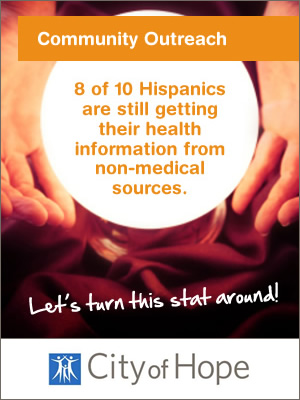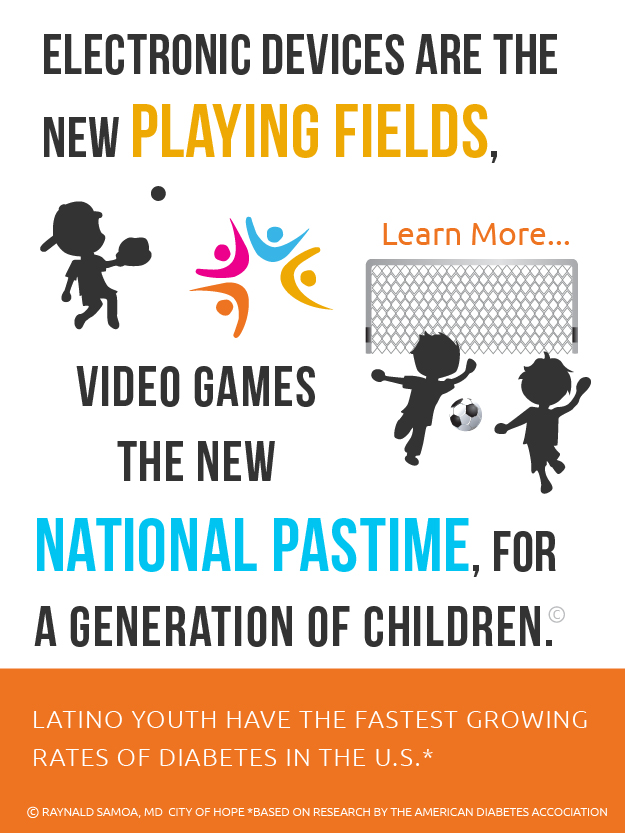
Marketing Health & Wellness to U.S. Hispanics
09/24/2015 12:00PM | 11679 views“The first wealth is health” – Ralph Waldo Emerson
Hispanic attitudes towards health and wellness impact a range of categories, from fast food to pharmaceutical, and understanding the Hispanic point-of-view is becoming increasingly critical to the success of American business. This article will highlight some of the factors that have historically influenced Hispanics and provide key takeaways for marketers interested in reaching out to the U.S. Hispanic market.
KEY DRIVERS
Many factors have historically influenced Hispanics in health and wellness decisions and behaviors. Marketers should not only learn to recognize these factors, but also be able to overcome the roadblocks that in many instances they represent. Marketers face a challenge of striking a balance between General Market norms and what Hispanics learn from their families and individual countries of origin.
Following, let’s examine some of the key factors and traits to consider:
1. Hispanics share a low level of health literacy. Recent immigrants are even less knowledgeable than their acculturated peers.
2. Hispanics are at a greater risk for a number of chronic illness and diseases. This holds true despite Hispanics having lower mortality rates than the overall population.
3. Hispanics have the highest uninsured rates (32%) of any racial or ethnic group. This contributes to a lack of adequate healthcare.
4. Hispanics have a permissive attitude towards defining “healthy.” The General Market tends to look at health through the lens of deprivation, while Hispanics tends to be more permissive in their dietary allowances. For example, while soda may be completely eliminated from the General Market home, Hispanics tend to see sugary beverages as just one element in an otherwise healthy diet and “part of being a kid.”
5. Hispanics exhibit a different approach to exercise. Attitudes towards physical activity and body image are also different. While the General Market tends to follow strict fitness regimens (gym memberships, personal trainers, etc.) and pursue adrenaline-filled activities (mountaineering, snowboarding, etc.), Hispanics are less intense about conquering Mother Nature. Instead, they’re more focused on activities that provide general mobility, whether it’s simply going for a walk or playing with their kids at the park. In addition, Hispanics see a little extra body fat and curves as a sign of good health; there’s less emphasis to have visibly defined abdominal muscles or size 0 frame.
6. Superstitions and home remedies can play a major role. This is true especially for older, less acculturated Hispanics. Although many younger, acculturated Hispanics see home remedies as antiquated, these healing methods are culturally approved and also provide a low-cost alternative to modern medical care.
CULTURAL INFLUENCES
Getting Personal
When it comes to medical settings, Hispanics want a more personal relationship with doctors than Non-Hispanics. For example, only 40% of Hispanics say their doctors “understand their needs and make them feel at ease” vs. 55% of Non-Hispanics. Hispanics are also significantly less likely to report that doctors discuss benefits and side effects with them (29% vs. 53% Non-Hispanics).
It’s important for Hispanics to be able to feel comfortable with medical professionals. For some Hispanics, this comfort level will come from being able to communicate in Spanish, but it can also stem from cultural awareness and sensitivity. To supplement their doctor/patient relationships, Hispanics also rely heavily on other “front-line” medical professionals, like nurses, pharmacists and support staff.
Waiting Too Long
Culturally speaking, Hispanics tend to be reactive when it comes to pursuing medical care. They use very little, if any, preventive care and are less likely to visit doctors before diagnosis. They also delay their use of medical care when chronic, disease-related symptoms (warning signs) occur.
There are multiple reasons why Hispanics delay care, ranging from machismo (the attitude of males wanting to be seen as strong instead of weak) to fatalism (the idea that our fates are predetermined and our actions have little impact on outcomes in life).
We’re All In This Together
Hispanics are heavily influenced by a selfless, collectivist way of thinking that places the family’s needs before that of the individual. Group activities are dominant, responsibility is shared and accountability is collective. One example of this attitude is in the way Hispanics approach taking care of the elderly. Nursing homes are primarily a General Market method for elderly care that Hispanics are much less likely to use. Instead, a number of Hispanics identify as caregivers. These caregivers are actively involved in many aspects of care beyond medical help, which include managing finances, grocery shopping, providing transportation and acting as translators.
Hispanics rely heavily on word-of-mouth when it comes to health-related information and guidance. It’s not necessarily because of a lack of trust in doctors (Hispanics tend to trust authority figures), but because Hispanics tend to place high value on the opinions of friends and family. Still, this reliance on social networks can pose problems when Hispanics combine or substitute professional medical advice for the passionate, opinionated counsel of a family member.
Conclusion
The U.S. Hispanic market is a dynamic, diverse and growing segment that provides a unique opportunity for marketers who are able to connect with this ethnic group. The information in the article provides a broad and simplified overview of Hispanic attitudes towards health and wellness. Marketers wishing to successfully target Hispanics will surely benefit from a much deeper and comprehensive understanding of the many Health and Wellness nuances in this group.











Post your Comment
Please login or sign up to comment
Comments